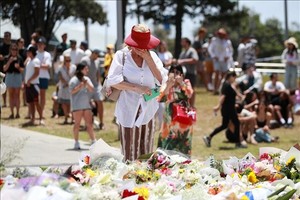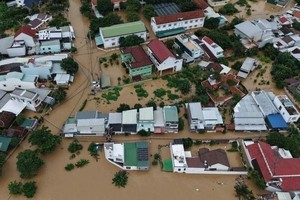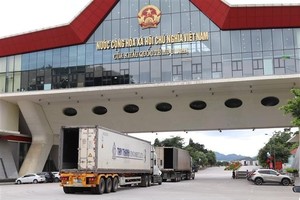The Japanese government estimates material damage from a deadly earthquake and tsunami that struck the country's northeast this month at 15-25 trillion yen ($185-308 billion), making it the costliest ever natural disaster, the Nikkei newspaper reported on Wednesday.
The figures cover damage to roads, homes, factories and other infrastructure and eclipses the $100 billion loss tally after the 1995 Kobe quake, until now ranked as the costliest natural catastrophe.
The upper end of that range would equate to about 6 percent of Japan's gross domestic product (GDP).
Nikkei said the estimate, the government's first, does not include losses in economic activity from planned power outages or the crisis at a stricken nuclear power plant in Fukushima, where work crews are still struggling to prevent further radiation leaks.
While economists expect Japan's biggest reconstruction push since the post-World War Two period to give the hard-hit economy a badly needed lift in the second half of the year, they warn that power shortages are the greatest risk to such a scenario.
The 9.0 magnitude quake that struck on March 11 unleashed a deadly tsunami that wiped out whole communities, leaving nearly 22,000 dead or missing and 350,000 homeless, and crippling the biggest power plant in Japan and Asia.
Economics Minister Kaoru Yosano will present the estimate to a cabinet meeting on Wednesday and it will serve to map out disaster relief plans and an emergency budget to fund recovery costs, the Nikkei said, without citing sources.
BLACKOUTS RISK
Tokyo Electric Power Co, which serves Tokyo and the surrounding area that accounts for 40 percent of Japan's economic output, lost about 20 percent of its operating thermal and nuclear power generation and is unlikely to get enough back online to meet peak summer demand.
The utility is unable to get much surplus power from operators in the undamaged western part of the country because they operate with a different power frequency.
That means more outages, following rolling blackouts in the immediate aftermath of the disaster which forced factories, shops and offices to close, while making it difficult for many workers to commute and keeping consumers at home.
BANK OF JAPAN'S RESPONSE
In initial response to the disaster, the Bank of Japan started pumping trillions of yen into the money market to prevent it from seizing up.
The injections brought deposits held with it by lenders to a record high above 40 trillion yen and well above a previous peak reached in 2004 when the central bank pursued a policy of deliberately flooding the financial system with cash known as quantitative easing.
On Wednesday, central bank board member Ryuzo Miyao repeated the bank's pledge to do its "utmost to ensure financial market stability," and said it would need to reconsider its earlier view that the economy was on course for a moderate recovery.
"We need to be mindful that the quake's negative impact on the economy at least on the supply side may be bigger than the Kobe quake 16 years ago and be prolonged," he told a gathering of business leaders.
YEN IN CHECK
The Japanese authorities also teamed up with their G7 partners in a rare joint intervention in currency markets on Friday, selling the yen after it spiked to a record high of 76.25 to the dollar, threatening to further hobble the export-reliant economy.
The yen has crept up from post-intervention lows, but hovered well below its peak at around 80.90. Bank of Japan data showed on Wednesday that the intervention proved far smaller than initially thought with central banks selling a total of $6.5 billion worth of yen.
A senior official from the ruling Democratic party said on Tuesday that at least two and perhaps more emergency budgets would be needed to pay for the reconstruction, with first focused on immediate disaster relief, possible in April or May.
The government is considering setting up an agency to coordinate reconstruction efforts and while there is no official word yet how much Tokyo will end up spending, but it looks certain the figure will well exceed the 3 trillion yen bill after the Kobe quake.
Initial economists' estimates of the economic damage ranged between 10 and 20 trillion yen.
The World Bank, in a report on Monday, largely based on such assessments, concluded that the world's third-largest economy should bounce back later this year after a brief slowdown.
Many analysts point out, however, that it is hard to estimate the ripple effects of disruption to production, both inside Japan and abroad, caused by power shortages as well as the impact of the nuclear accident and food contamination fears on business and consumer sentiment worldwide.
One of the threats to the global economy is a rise in prices of oil, driven both by the air campaign in Libya and countries reconsidering their nuclear power plans in the aftermath of the accident in Japan. There are also concerns as to what extent the crisis in Japan will affect its overseas investments.
($1 = 81.045 Japanese Yen)
























